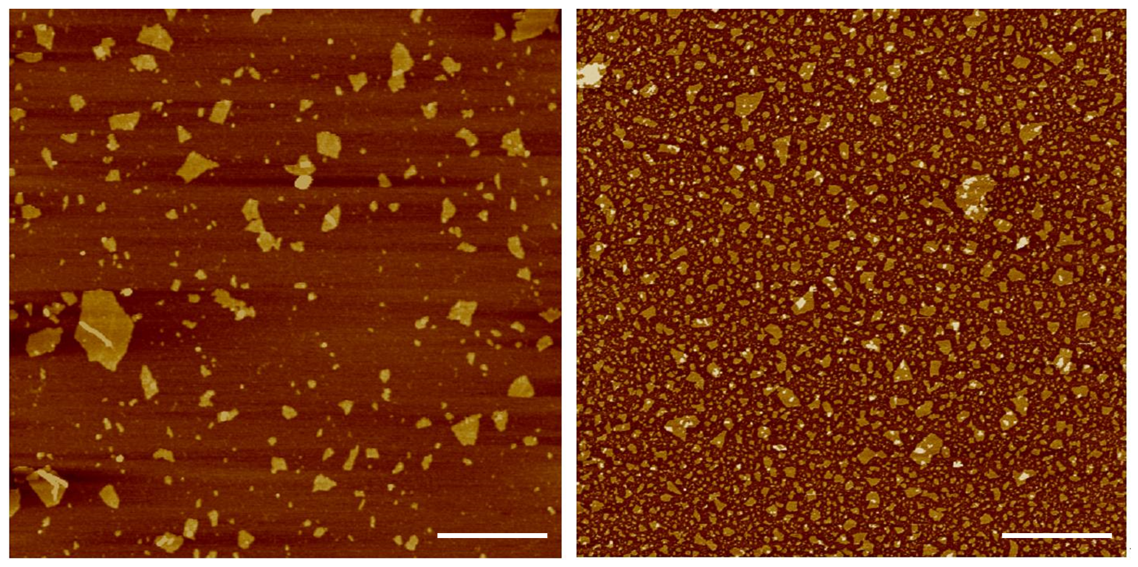Friday, 16 February 2024
Revolutionary Study Indicates Safe Development of Graphene Oxide Nanosheets to Study Acute Cardiorespiratory Responses
A collaboration between researchers from ICN2 and the Universities of Edinburgh and Manchester in the UK describes the results of the first-in-human clinical exposure study involving the inhalation of thin graphene oxide nanosheets. The study has been published in the journal ‘Nature Nanotechnology’.

In their collaborative work, the scientists assert that while graphene oxide nanomaterials hold promise for diverse applications, they may also pose potential safety risks to human health. To address this concern, they carried out a double-blind randomized controlled clinical study to investigate the acute impact of inhaling graphene oxide nanosheets on the pulmonary and cardiovascular function of healthy individuals.
The experiment involved 14 volunteers who were exposed to graphene oxide for two hours while cycling in a mobile exposure chamber from the Dutch National Institute for Public Health and the Environment to Edinburgh. They were asked to breathe the material through a mask. The acute effects on various biological parameters, such as lung function, blood pressure, blood clotting, and inflammation, were monitored before and after exposure. Dr Mark Miller, Senior Research Scientist at the University of Edinburgh Centre for Cardiovascular Science noted: “Being able to explore the safety of this unique material in human volunteers is a huge step forward in our understanding of how graphene could affect the body. With careful design, we can safely make the most of nanotechnology.”
What is graphene oxide?
Graphene oxide is a revolutionary nanomaterial made of oxygen atoms, becoming very useful for mixing it with water-based environments, which pristine graphene is not so good at. What is so special about this specific type of graphene is that it is considered to be one of the world’s thinnest, super strong and super flexible material. Moreover, it is surprising to note that this ‘wonder’ material is thousands of times thinner than human hair, making it imperceptible with an optical microscope. Instead, we would rely on a scanning electron microscope (SEM) for their observation, as it can achieve the high resolution necessary to visualize nanoscale structures and particles, such as graphene.
Astonishing results and future research directions
The researchers found that carefully controlled inhalation of graphene oxide did not lead to acute adverse effects on lung function, blood pressure, or other biological parameters measured. This is significant as it suggests that graphene oxide, in the tested form and dosage, could potentially be developed further without posing immediate risks to human health. However, it is worth noting that there was a slight indication that graphene oxide inhalation might influence blood clotting, though the effect was deemed minimal. In any case, this is the first-ever controlled human exposure study, and before a conclusion on the safety of the material can be reached, a lot more studies need to be performed to determine any possible longer-term effects and increased doses of exposure.
Graphene oxide inhalation, always under controlled conditions, appears to be safe for humans in the short term and at this single dose. “Nanomaterials such as graphene hold such great promise, but we must ensure they are manufactured in a way that is safe before they can be used more widely in our lives”, Miller said.
The successful completion of this controlled human trial represents a significant milestone in graphene research. It demonstrates progress in both materials’ science and clinical capacity, paving the way for further studies to explore the potential applications of graphene in medicine and beyond.
To comprehensively evaluate its potential applications – such as electronics, phone screens, clothing, paints, and water purification – the researchers underscore the necessity for additional investigation into the safety of graphene. This includes exploring the effects of higher doses and longer exposure periods. Kostas Kostarelos, leader of the Nanomedicine Lab at ICN2 and Professor of Nanomedicine at the University of Manchester, stated: “This is the first-ever controlled study involving healthy people to demonstrate that very pure forms of graphene oxide – of a specific size distribution and surface character – can be further developed in a way that would minimise the risk to human health.”
Reference article:
Jack P. M. Andrews, Shruti Joshi, Evangelos Tzolos, Maaz Syed, Hayley Cuthbert, Livia E. Crica, Neus Lozano, Emmanuel Okwelogu, Jennifer B. Raftis, Lorraine Bruce, Craig A. Poland, Rodger Duffin, Paul Fokkens, A. John F. Boere, Daan L. A. C. Leseman, Ian L. Megson, Phillip D. Whitfield, Kerstin Ziegler, Seshu Tammireddy, Marilena Hadjidemetriou, Cyrill Bussy, Flemming R. Cassee, David E. Newby, Kostas Kostarelos & Mark Miller (2024). First-in-human controlled inhalation of thin graphene oxide nanosheets to study acute cardiorespiratory responses. Nature Nanotechnology. DOI: https://doi.org/10.1038/s41565-023-01572-3

